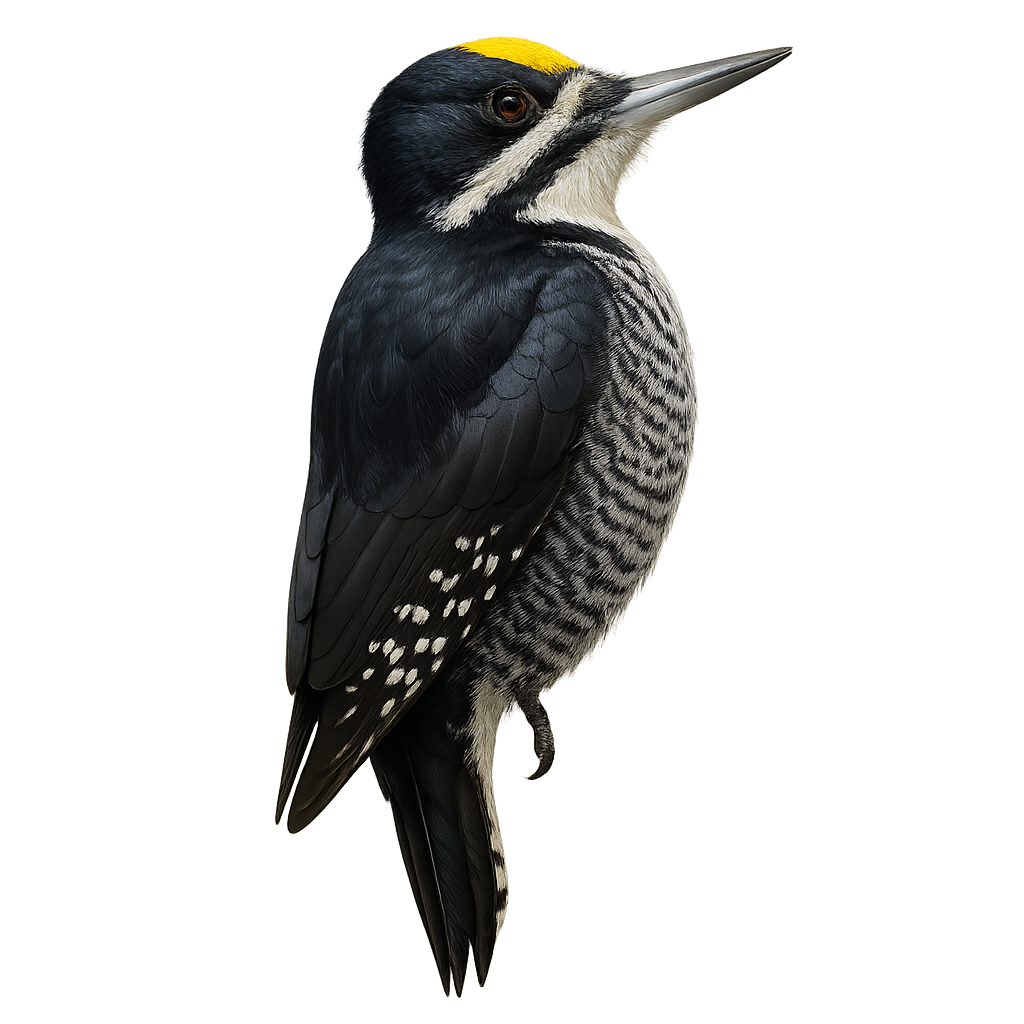Your wildlife photography guide.
Explore the black-backed woodpecker in detail, study its behavior, prepare your shots.
Where to observe and photograph the black-backed woodpecker in the wild
Learn where and when to spot the black-backed woodpecker in the wild, how to identify the species based on distinctive features, and what natural environments it inhabits. The WildlifePhotographer app offers tailored photography tips that reflect the black-backed woodpecker’s behavior, helping you capture better wildlife images. Explore the full species profile for key information including description, habitat, active periods, and approach techniques.
Black-backed Woodpecker
Scientific name: Picoides arcticus

IUCN Status: Least Concern
Family: PICIDAE
Group: Birds
Sensitivity to human approach: Suspicious
Minimum approach distance: 10 m
Courtship display: May to June
Incubation: 12-14 jours
Hatchings: May to June
Habitat:
boreal forests, coniferous forests, burned areas
Activity period :
Primarily active during the day, with peak activity in the morning and late afternoon.
Identification and description:
The Black-backed Woodpecker, or Picoides arcticus, is a fascinating bird primarily inhabiting the boreal forests of North America. This woodpecker is easily recognizable by its glossy black plumage on the back and white flanks. It measures about 23 cm in length and has a powerful beak, ideal for digging into wood in search of insects. It primarily feeds on beetle larvae found under the bark of dead or dying trees. The Black-backed Woodpecker plays a crucial role in the forest ecosystem by helping control pest insect populations and creating cavities that serve as shelters for other species. Although generally discreet, its distinctive drumming can be heard from afar.
Recommended lens:
400mm – adjust based on distance, desired framing (portrait or habitat), and approach conditions.
Photography tips:
To photograph the Black-backed Woodpecker, it is advisable to use a telephoto lens of at least 400mm to capture detailed images from a distance. Look for recently burned forest areas where this bird is often active. Be patient and discreet, as although it is suspicious, it can be observed drumming on dead tree trunks. Use a tripod to stabilize your camera and wait for the right moment to capture its unique behavior.
The WildlifePhotographer App is coming soon!
Be the first to explore the best nature spots, track rutting seasons, log your observations, and observe more wildlife.
Already 1 432 wildlife lovers subscribed worldwide

